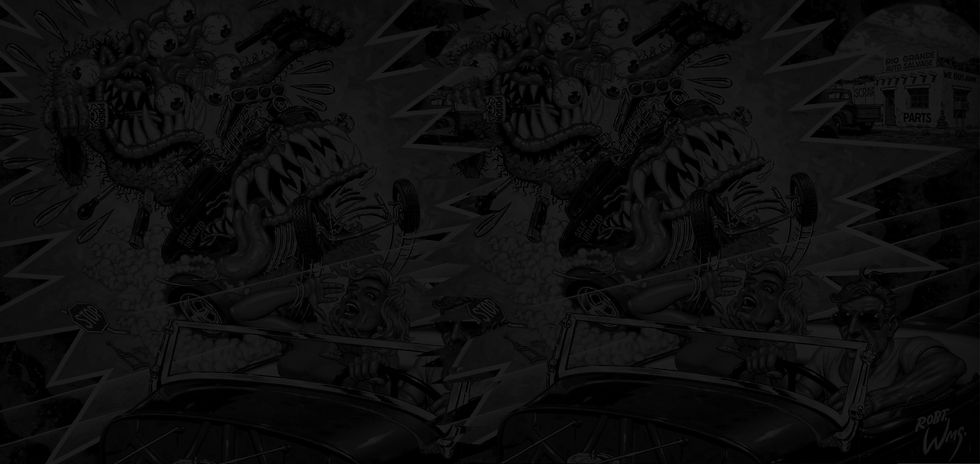
ENTERTAINMENT

LIMITED EDITION SKATE DECK




SHAPED
SAE - 31.625” x 9.125” - WB 15.375”. Nose: 5 3/8”. Tail: 6 7/8”
Metric: 23 cm x 80.3cm / WB 38.8cm. Nose: 13.7 cm Tail: 17.7 cm
• LIMITED EDITION
POP
SAE - 31.75” x 8.25” - WB 14.125”
Nose: 7.13” Tail: 6.88”.
Metric - 21cm x 80.5 / WB 35.8 cm.
Nose: 18.2cm Tail: 17.3cm
Made by SCHMITT STIX
• STANDARD

ROBERT WILLIAMS
Master Oil Painter
In the late 20th and 21st century diverse forms of commonplace and popular art appeared to be coalescing into a formidable faction of new painted realism. The phenomenon owed its genesis to a number of factors. The new school of imagery was a product of art that didn’t fit comfortably into the accepted definition of fine art. It embraced some of the figurative graphics that formal art academia tended to reject: comic books, movie posters, trading cards, surfer art, hot rod illustration, to mention a few.
This alternative art movement found its most congealing participant in one of America’s most opprobrious and maligned underground artists, the painter, Robert Williams. It was this artist who brought the term “lowbrow” into the fine arts lexicon, with his ground breaking 1979 book, The Lowbrow Art of Robt. Williams. It was from this point that the seminal elements of West Coast Outlaw culture slowly started to aggregate.
Williams pursued a career as a fine arts painter years before joining the art studio of Ed “Big Daddy” Roth in the mid-1960’s. And in this position as the famous custom car builder’s art director, he moved into the rebellious, anti-war circles of early underground comix.


BRAD BOWMAN
LEGENDARY SKATEBOARDER
Brad Bowman is widely recognized as one of the most stylish skateboarders of the late 1970s. His appearances on the pages of Skateboarder magazine ripping backyard pools and skateparks comprise some of the most memorable and beloved photos of that time period. Brad’s first metal-wheeled skateboard ride–in Indiana in the mid-1960s–lasted less than 10 seconds and ended with a bloody elbow and a hipper. A few years later, living in Corona Del Mar, California, Brad passed a toy store window display containing a clay-wheeled Super Surfer inlaid with beautiful exotic wood. Soon thereafter, he talked his mom into getting him one.
Although Brad loved riding the streets and hills of Corona Del Mar, his mother got a job that moved them up to the San Fernando Valley. There, Brad fell hard for motocross and BMX, and skateboarding briefly took a back seat. But soon enough, he met a pack of local skaters who became his crew at daily sessions in the valley’s numerous ditches, banks, and pools. Another move to Reseda accelerated Brad’s skating career, as his new school was located just three minutes from the Skatercross, which became his second home and advanced stomping grounds.
-Skaterboard Hall of Fame

Some quick highlights from the Deck release warehouse party • April 20, 2024




RobtWms Crimes Against The Eye

RobtWilliamsFacileRaconteur

ZOMBIE MYSTERY PAINTING PRT 1: MONDO AMORE

RobtWms FatherOfEx 2019

RobtWms Slang Aesthetics

RobtWms Visual Adventures

The Man Who Created The First "Rat Rod" | Robert Williams

Robert Williams Tells Some Crazy Hot Rod Stories! | Part 1

Robert Williams Tells Some Crazy Hot Rod Stories! | Part 2
VIDEO GALLERY

SELECTED PAINTINGS






OFFICIAL SITE
